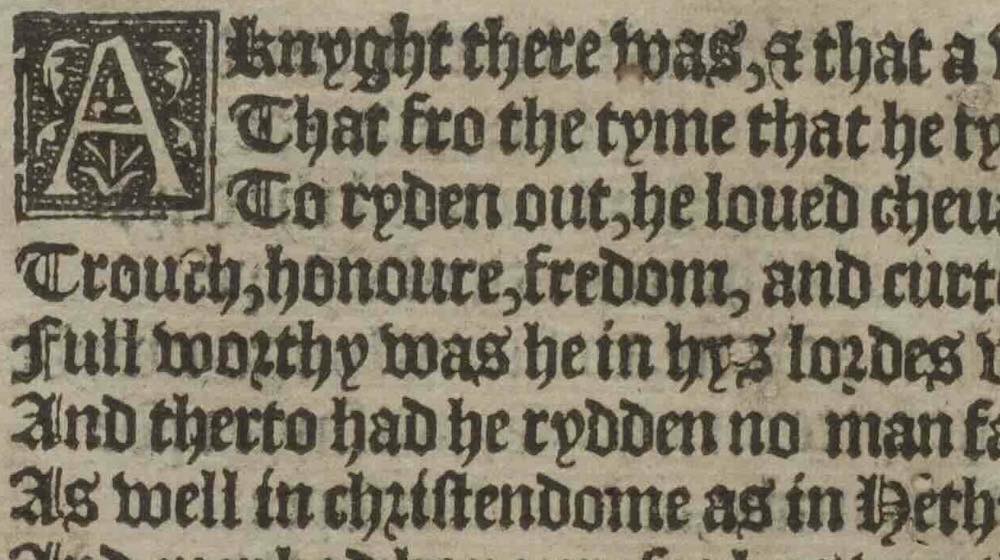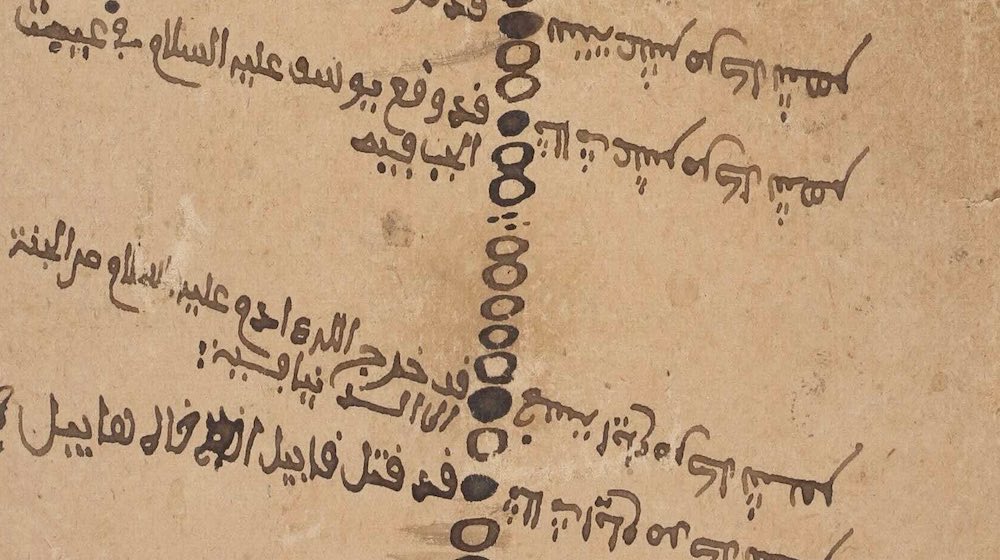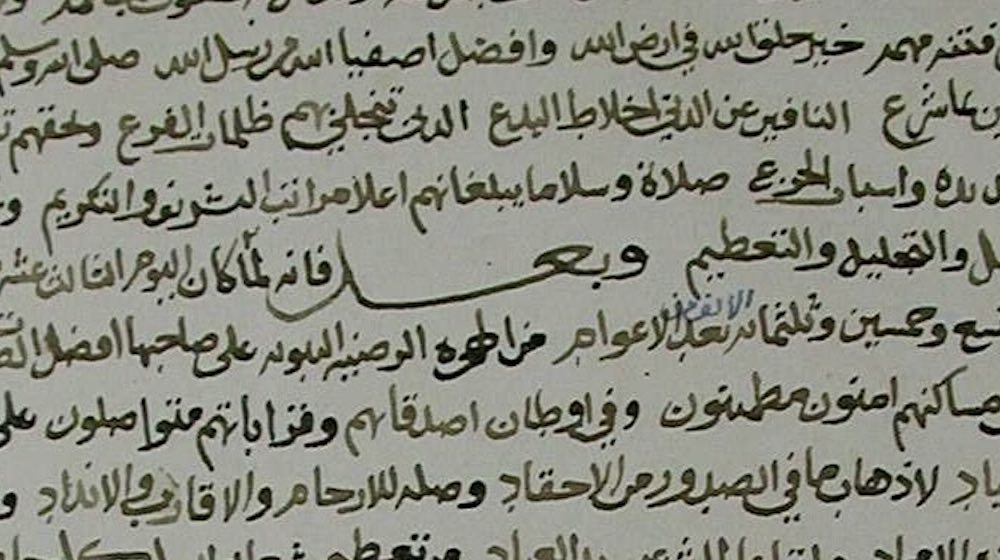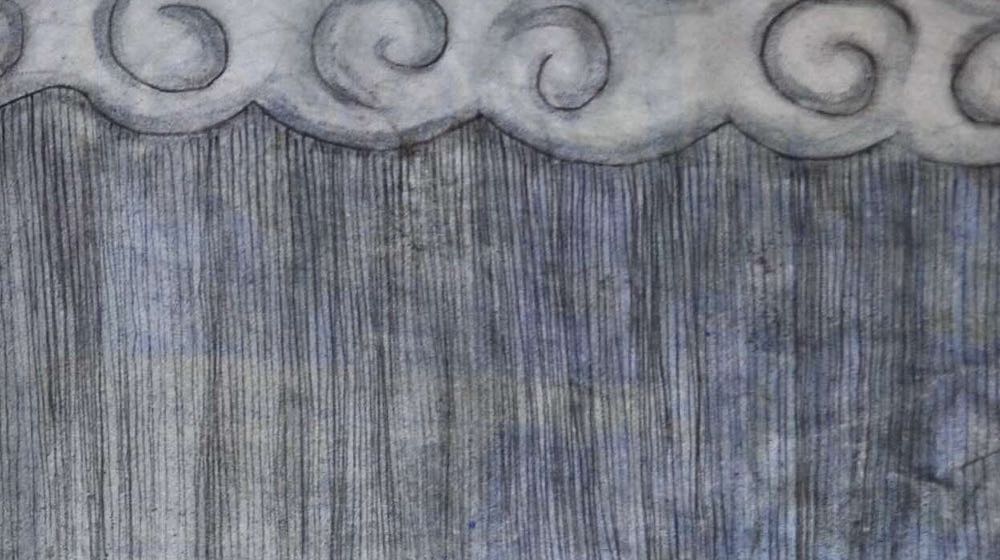Visualizing The Audible: Depictions Of Music In A Medieval German Manuscript
December 7, 2023
Visualizing the Audible: Depictions of Music in a Medieval German Manuscript
This story is part of an ongoing series of editorials in which HMML curators and catalogers examine how specific themes appear across HMML’s digital collections. On the theme of Music, Dr. Jennifer Carnell has this story from the Western European collection.
Although music is an aural and tactile experience, human beings also have a visual understanding of music. Take, for instance, a black oval with a flag mounted on the side, or a series of these notes along black horizontal lines. But what if music could be depicted in a totally different way?
In HMML’s first editorial on the theme of music (I Know It When I See It), we saw examples of the development of Western musical notation over several hundred years: from “neumes” that show the relationship between notes as relative pitch, to square notation that shows pitch without rhythm or tempo.
A lack of information about pitch and tempo can make it challenging (even impossible) for musicologists to fully recreate medieval music. One theory about this absence is that music was largely learned through oral tradition and instruction. The written notes were merely memory aids, helping individuals remember what they had already learned or helping a choir to be in unison.
Another method for keeping a choir on track didn’t rely on musical notation at all. In medieval Europe, choirs often followed a method popularized by Guido d’Arezzo, an Italian Benedictine monk and music theorist. Using the layout of the human hand to indicate notes, the method became known as the Guidonian hand. A beautiful rendition of it can be found in HMML 42985, a manuscript housed in the Universitätsbibliothek Freiburg im Breisgau in Germany.
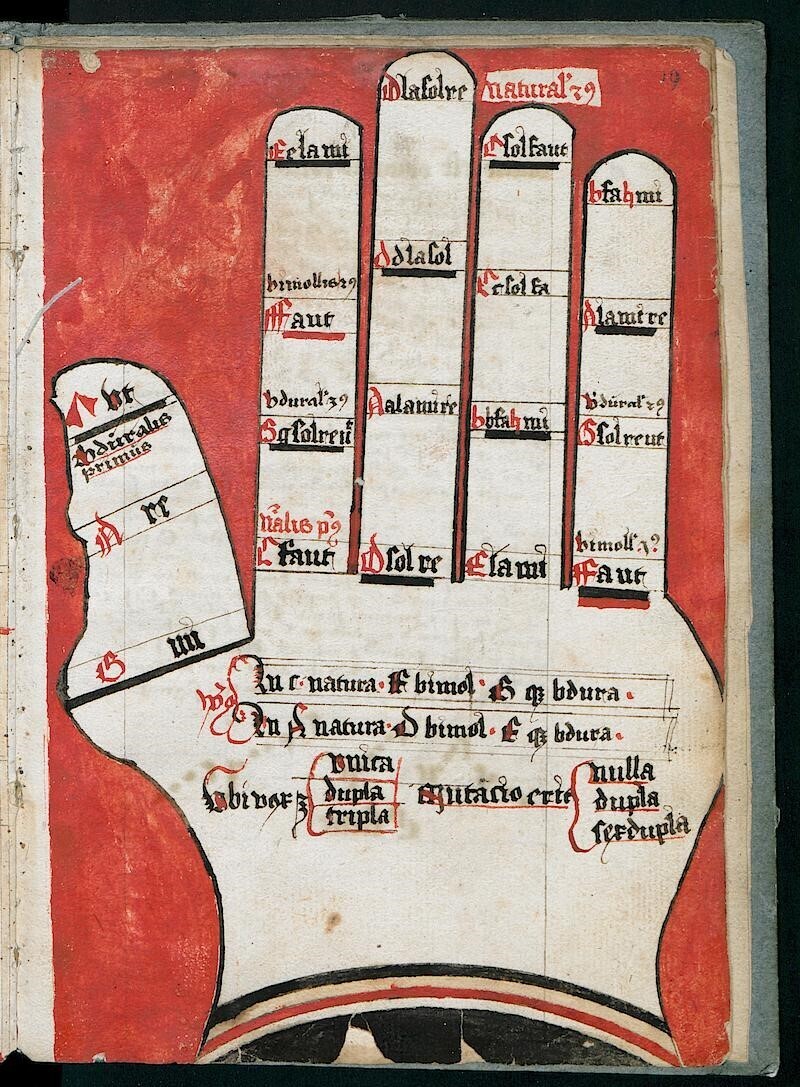
Guido authored numerous treatises on musical theory, including one on the use of an instrument called the monochord (see my previous post on the function of this treatise in one manuscript), which had been a fundamental part of musical education since the time of Boethius. Guido, however, is most known today for the Guidonian hand. This method traces specific harmonious notes grouped in a hexachord system—sets of six notes that are the early form of solfège (also known as Do Re Mi)—onto a three-dimensional space. These notes might belong to multiple hexachord groupings, as can be seen in a table preceding the Guidonian hand in HMML 42985.
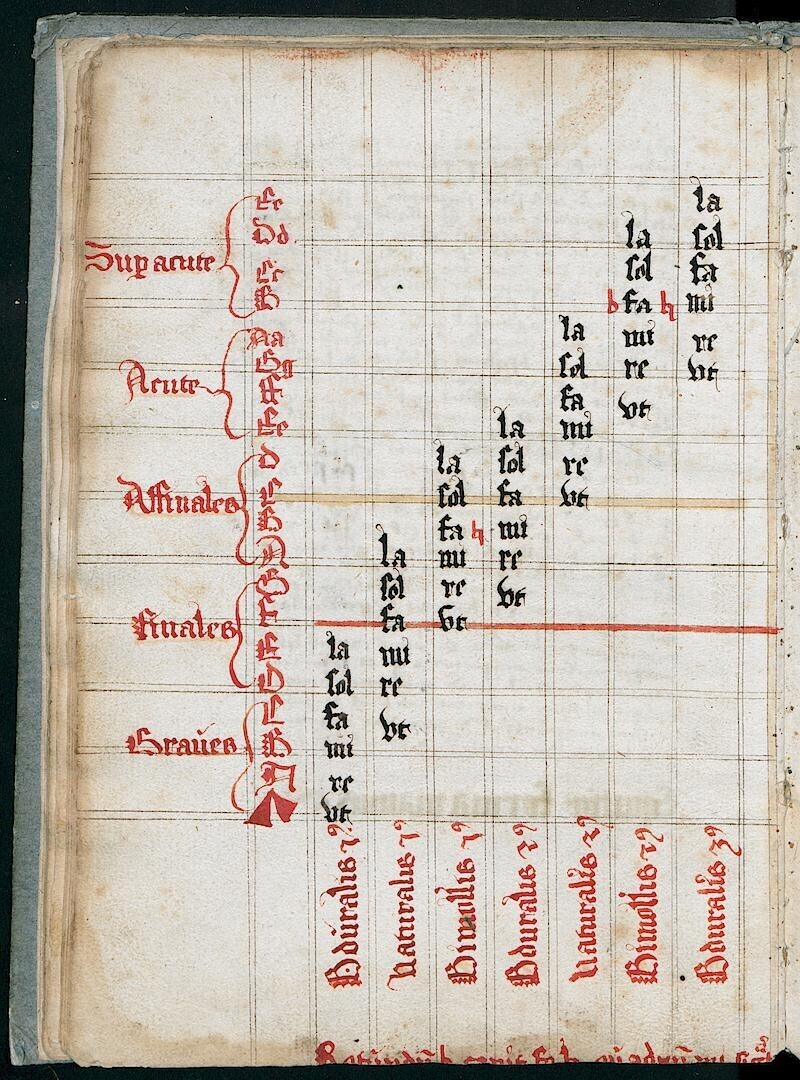
These pages depict music in two dimensions and three dimensions, with spatial layouts that are quite practical for understanding the relationships between harmonious notes. In HMML 42985, the table and Guidonian hand are followed by the musical notation of the hexachords a few pages later. In this way, the spatial, tactile depictions provide an educational foundation for the learning of music.
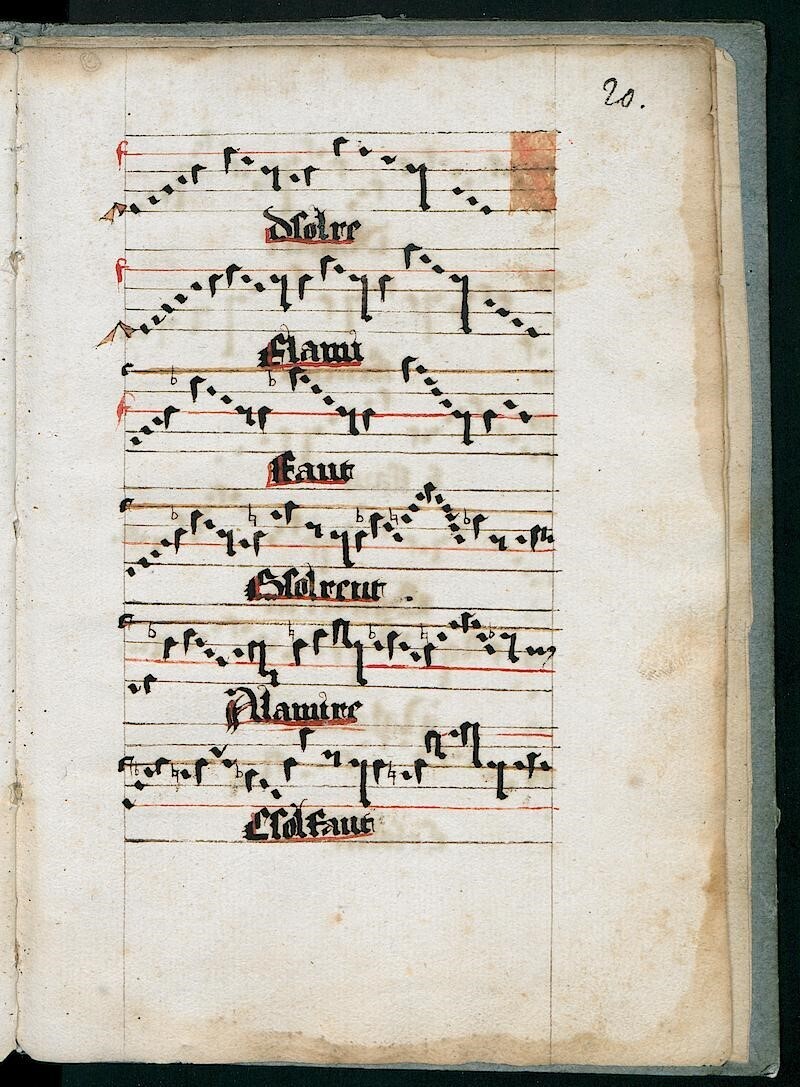
Guido’s technique became so widely known that it was adopted by other music scholars. In fact, the Guidonian hand and table in HMML 42985 accompany a collection of musical treatises that were authored not by Guido d’Arezzo but rather by a theologian and music theorist known as Konrad von Zabern, written sometime between 1460 and 1475, about 400 years after Guido’s death.
Von Zabern studied at the University of Heidelberg in the early 1400s, eventually becoming the preacher there. His interest in music theory led him to construct a monochord with keys (rather than a moveable bridge), to help a musician find the correct pitch on the string more easily and accurately. This type of monochord was the precursor to the clavichord and ultimately the piano keyboard.
Passionate about teaching music, von Zabern traveled the Rhineland and Upper Rhine region in the 1460s and 1470s, encouraging the reform of choral singing at many monasteries and giving lectures and demonstrations on his monochord at the universities of Heidelberg, Freiburg, and Basel.
Von Zabern’s works were copied in 1482 by Johannes Müller, a priest of a small chapel that belonged to a parish of the Order of Saint John of Jerusalem. The chapel was located in Schwalldorf, near Rottenburg am Neckar in what is now Germany. Müller had the official responsibility of singing the first mass of each day. It is perhaps due to von Zabern’s widespread lectures in the region that the priest dedicated the time and effort to create HMML 42985, writing by hand a beautiful copy of von Zabern’s text and adding his own text as well as the visual aids of the Guidonian hand, hexachord table, and musical notation. The manuscript demonstrates that even a priest serving in a small town had access to tools for professional development.
The existence of HMML 42985 is a testament to all of these efforts. The manuscript represents a legacy of musical education, stretching from Boethius’s teachings on the monochord in the early 6th century, to Guido d'Arezzo’s further developments in the 11th century, to von Zabern’s and Müller’s work in the late 15th century. The theories and diagrams of HMML 42985 not only helped medieval monks and scholars perform music, but they can still help us today to revisit our own understandings and assumptions about the appearance and harmonious structures of music.

